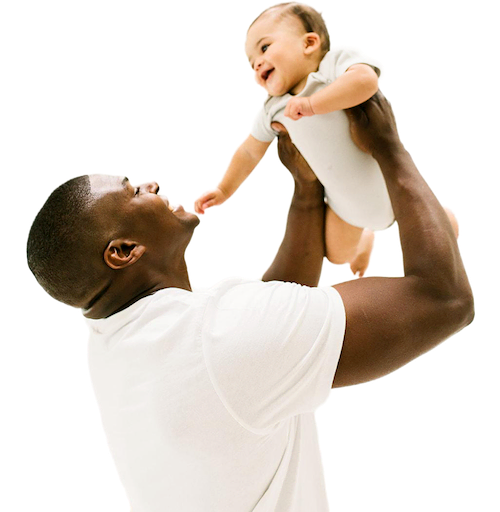Want an easy way to help your baby or toddler sleep? Pay attention to how long they’re awake. Truly! Knowing your baby or toddler’s wake windows will help them fall asleep more easily and stay asleep longer!
What are wake windows?anchor
A wake window is the amount of time your baby or toddler is awake between one nap and the next. I like to count wake windows from the time you get your baby out of the crib or bassinet until you lay them down again.
Wake windows include everything that happens while your baby or toddler is out of the bassinet or crib, including feeding, spending time outside, playing with toys, singing songs, reading books, and even the nap time routine and bedtime routine.
Taking Cara Babies Classes
stars ( reviews)
If sleep is a struggle, my classes can help. I’ll teach you all of my best tips for using wake windows to set your days up for success and work towards longer stretches of sleep at night. Choose your little one’s age to get started:
Why are wake windows important?anchor
Wake windows that are too long can result in an overtired baby or toddler who struggles to calm down enough to fall asleep or stay asleep. On the other hand, wake windows that are too short can result in a baby or toddler who simply isn’t ready to fall asleep or will only take a tiny catnap. If you get wake windows just right, you’re setting your baby or toddler up to be able to fall asleep more easily and stay asleep longer.(4)
When does my baby or toddler’s wake window start and end? How do I calculate my baby or toddler’s awake time?anchor
Your baby or toddler’s wake window starts when they’re taken out of the crib and ends when placed back in the crib.
I know you may see them moving around on the baby monitor for the next 10 minutes after laying them down for a nap – and that’s okay! Babies take anywhere from 5-20 minutes to fall asleep, while toddlers can take 20-30 minutes to fall asleep. As long as they’re in a good sleep environment, this is considered rest time (and not active awake time).
Here’s why: Think about the last time you laid in bed not really awake but not really asleep. This is your brain resting, and it’s the same for your baby or toddler. So those times your baby or toddler is awake just before falling asleep and at the end of the nap don’t really count as part of their wake window. Did you catch that? Even if your baby takes a few minutes to fall asleep, we’re still going to give them a full wake window. You don’t need to lay your little one down earlier in anticipation of the amount of time it might take them to fall asleep.
Do wake windows include feeding? anchor
Yes, they do! If you have a newborn, I know how hard it can be to keep your baby awake during the day, especially during feedings, but we do want to count the time it takes to feed your baby as part of a wake window. If your baby does fall asleep as you’re feeding them (this is so common!), you may need to add a few more minutes to the wake window to help them be tired enough for the next nap or bedtime. Be sure to keep an eye out for their sleepy cues to guide you. If your baby seems to always doze off while feeding, check out my tips for how to keep your baby awake during feedings.
Taking Cara Babies Classes
stars ( reviews)
Does it feel impossible to keep your baby awake for feedings? I can help. My classes will teach you how to gently shift feedings to awake time, set your days up for success, work towards longer stretches of sleep at night, and more. Choose your baby’s age to get started:
What should we do during a wake window? How do we stretch wake windows? anchor
There’s plenty we can do during the day to help get great nights and naps.
Want help filling your wake windows?
Get my free download filled with Daytime Tips for Better Nights and Naps.
Let me tell you about The 5 Fs™. These are five of the most important things you can do during wake windows to set your baby up for success. I don’t want you to stress over trying to work in all five F’s during every wake window. This isn’t a list of even more things for you to try to cram into your busy schedule! Instead, consider how you can naturally work them into your daily rhythm. Many of them can be done in combination!
1. Feedinganchor
Babies instinctively understand how many calories they need to consume over a 24-hour period. It’s true! If they don’t get enough calories during the day, they’ll ask for them at night.
How do we prioritize feedings during awake time? Offer feedings every 2-3.5 hours during the day, according to your little one’s hunger cues. Try to minimize distractions to encourage full feedings.
2. Fresh Airanchor
Exposure to natural light, especially during late morning and early afternoon, helps babies sleep better at night. In part, that’s because sunlight boosts Vitamin D. Vitamin D helps regulate your baby's circadian rhythm by producing the melatonin that will help your baby sleep at night(3).
Taking a walk or spending time at the park are great ways to get fresh air, but these aren't necessary or practical every day, much less for every wake window. Think creatively about how to get some daylight. Put your baby on your hip, and walk to the mailbox together. Deliver some treats to your neighbors. When you go to the grocery store, park a little farther away than you normally would. If the weather isn’t cooperating, pull back the curtains and stand in the daylight for a few minutes.
Expert Tip: Spending time outside has been shown to boost grownups’ moods too!
3. Floor Timeanchor
Physical activity is important for your baby’s brain and body development. It’s also good for using up all of that energy! Just like adults, little ones sleep better when they’ve moved their bodies during the day.
How can you do that? Arrange toys to promote movement. Put interesting objects at opposite ends of the rug so your little one has a good reason to crawl back and forth. Position toys along the edge of the couch to encourage cruising. Play some music and see if they’ll mimic your dancing. When you're out and about, hold your little one's hand and let them toddle along next to you.
Expert Tip: On busy days, little ones spend loads of time going from their car seat to a shopping cart to a stroller and back to a car seat. By the end of the day, we might be exhausted, but they’ve actually had very little activity.
Be mindful of how much time your little one spends in “containers.” I know bouncers, car seats, swings, wraps, strollers, and saucers can be lifesavers! Just be sure your baby is getting opportunities to move their little body with adequate floor time.
4. Free Playanchor
Parents often feel like they’re supposed to entertain their baby all day, but the truth is, little ones need a chance to explore the world on their own terms. Free play accelerates a child’s brain development as they interact with objects in their own way- thinking, making decisions, and problem solving along the way. And all the mental stimulation can help them sleep better!
Try parallel activities. Washing dishes? Let them bang some pots and pans. Folding laundry? Let them play in a pile of dishtowels. Cleaning the bathroom? Plop them in an empty tub and give them a sponge.
Bonus Tip: Treat yourself! Take your play yard outside and read the book you’ve been neglecting while your little one plays in a safe environment. You’ll want to supervise all these activities, but you can let go of directing them.
5. Face-to-Face Interactionanchor
Our little ones crave present and in-the-moment interactions with us. Uninterrupted face-to-face time provides mental stimulation and promotes language development. It also fosters a confident, secure attachment between parent and child- which makes nighttime and naps so much easier.
For face-to-face interaction, go screen-free. Put away your phone and turn off the TV so you and your baby can fully focus on one another. Talk to them, sing to them, and make lots of eye contact. Face-to-face is a good bonding activity for everyone, so when possible, have other family members, like older siblings, give some undivided attention to your little one too.
Need more ideas? I’ve got you. I put together a collection of activities for each month 0-18 months and 18 months-4 years.
Why do we stretch wake windows? anchor
As babies get older, they need more awake time in order to be tired enough for naps and bedtime(1). Your goal is to find the balance between tired enough to fall asleep but not overly tired.
How do we do this? Observe! Watch the length and quality of your baby's naps and notice how they’re acting! Remember, you know your baby or toddler best - If they’re cranky and struggling, aim for the shorter end of the wake window range. If they’re alert and active, aim for the longer end of the range. Combining what you know about your little one’s wake windows with their individual cues can help create a flexible routine for your day!
REMEMBER: Your baby is growing and developing rapidly. You’ll want to reevaluate wake windows each month!(2)
How do I find the right wake windows for my baby? anchor
Finding the right wake windows for your baby is a balance between getting enough awake time and preventing overtiredness. For babies 0-4 months sleepy cues are a helpful way to find the right wake window. As babies get older, sleepy cues can be trickier to spot, so you can use age-specific wake window ranges as your guide.
Keep in mind, wake windows tend to increase as the day goes on. This means that the shortest wake window is often the time between getting out of the crib in the morning until laying down in the crib before the first nap. The longest wake window of the day tends to be between the last nap of the day and bedtime.
(For babies who are on one nap, the first wake window of the day shifts to being the longest wake window of the day. See my tips for toddler wake windows below.)
If you think you’ve nailed wake windows and sleep still feels tricky, I can help. I’ll teach you tools to look at the whole picture of your little one’s sleep. You’ll get all of my best strategies for setting your days up for success, working towards longer stretches of night sleep, and more. Each class will meet your little one right where they are developmentally whether they’re a newborn (0-4 months), baby (5-24 months), or toddler (2-4 years).
What are a baby’s wake windows by age?anchor
Here are the recommended wake window ranges based on age for babies 0-24 months (keep reading for wake windows for 2-4 year olds):
0-4 weeks: 30-70 minutes
4-12 weeks: 60-90 minutes
3-5 months: 75-120 minutes
5-7 months: 2-3 hours
7-10 months: 2.5-3.5 hours
11-14 months: 3-4 hours
14-24 months: 4-6 hours
Want a graphic to save on wake windows by age?

Text version of Wake Window Ranges by Age table
| Baby’s Age | Wake Window Range |
|---|---|
| Less than 1 Month | 35-60 minutes |
| 1-2 Months | 60-90 minutes |
| 3-4 Months | 75-120 minutes |
| 5-7 Months | 2-3 hours |
| 7-10 months | 2.5-3.5 hours |
| 11-14 months | 3-4 hours |
| 14-24 months | 4-6 hours |
Keep in mind that wake windows are just one piece of the puzzle when it comes to baby sleep. If sleep is a struggle, my classes can help. I’ll teach you strategies to look at the whole picture of your little one’s day to work towards consistent naps and longer stretches of sleep at night.
How do I find the right wake windows for my toddler? What are a toddler’s wake windows by age?anchor
Finding the right wake window for your toddler is much the same as when they were a baby – finding a balance of the right amount of tiredness so they fall asleep at nap time.
If your 2, 3, or 4 year old is still napping, your goal is about 5-6 hours of awake time before the nap and about 4-5 hours of awake time after the nap. Let’s look at a few examples:

Text version of 2 year old routine table
| Time | Activity |
|---|---|
| 6:30 am | Wakeup Time |
| 12:30-3:00 pm | Nap Time |
| 7:30 pm | Bedtime |

Text version of 3 year old routine table
| Time | Activity |
|---|---|
| 6:45 am | Wakeup Time |
| 12:45-2:15 pm | Nap Time |
| 7:30 pm | Bedtime |
As your toddler gets older, you’ll find wake windows get longer and the nap gets shorter. So watch your toddler and adjust their schedule as needed.
How will I know if wake windows are right?anchor
Great question! Finding the right wake windows for your baby or toddler can be a bit of trial and error. You know you’ve got it right when naps and bedtime are not a battle and your little one is sleeping for good consolidated stretches.
Want to see some samples of how this can play out? Check out my age-specific sleep schedule blogs for more information about typical nap schedules for your baby or toddler’s age.
If your baby or toddler’s wake windows seem to be on point and sleep is still a mess, I can help! I have a class for your little one’s age with a step-by-step plan to teach the sleep skills they need.
For babies under 5 months, check out my First Five Months Bundle.
For those 5 months and older, The 5-24 Month Collection will be the right fit for you.
If your toddler is struggling with sleep, check out Toddler Sleep Training
References
4 Sources
Mindell et.al. (2016). Development of infant and toddler sleep patterns: real-world data from a mobile application.
Paruthi et.al. (2016). Recommended Amount of Sleep for Pediatric Populations: A Consensus Statement of the American Academy of Sleep Medicine.
Shakankiry et.al. (2011). Sleep physiology and sleep disorders in childhood.
Huang et.al. (2011). The role of adenosine in the regulation of sleep.
Keep in mind that the information and content on this blog is for informational purposes and should not be considered medical advice. If you have questions about your child, please reach out to your doctor.








